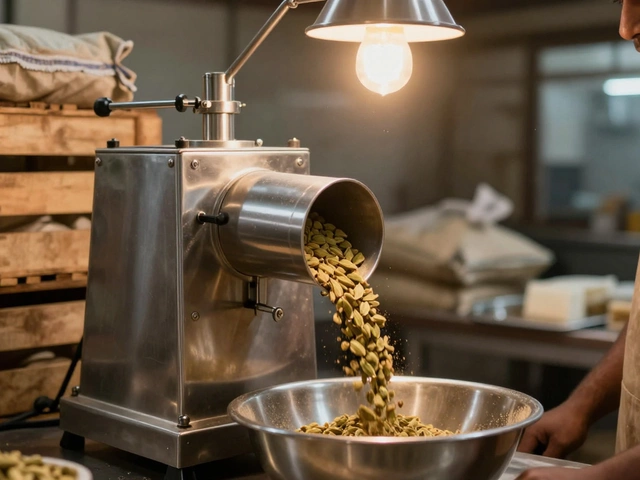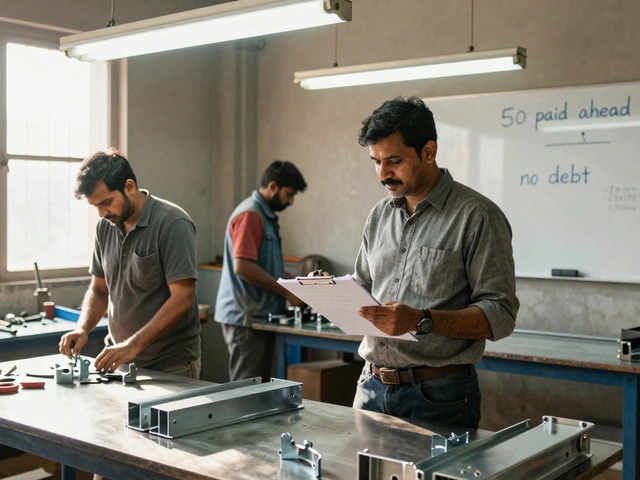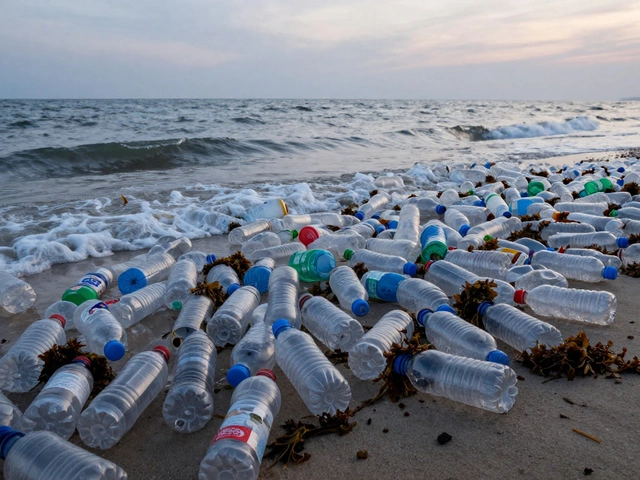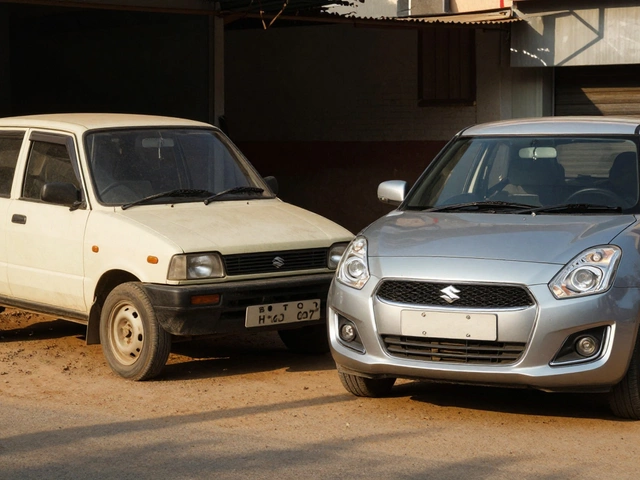Who Owns the Biggest Steel Company? The Real Story Behind Steel Manufacturing Giants
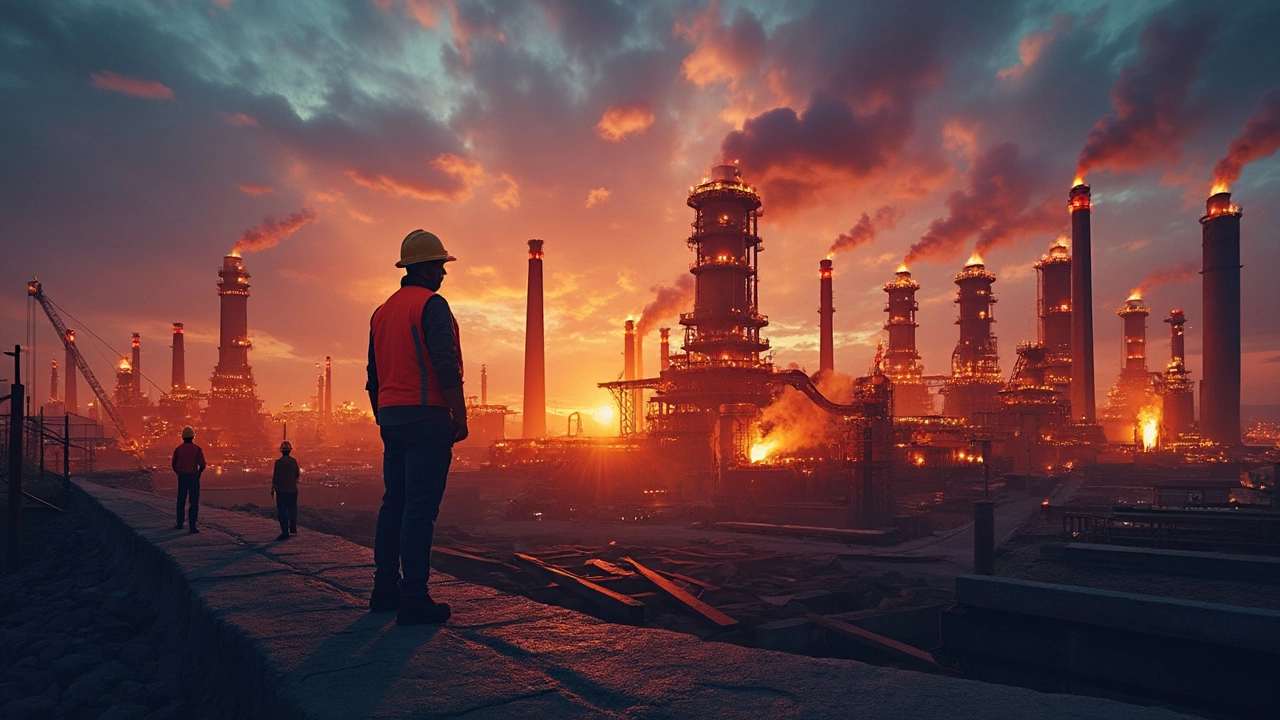
Standing in the shadow of a sprawling steel plant, it's hard to imagine just how much power one company can have. The steel industry runs on tough competition and razor-thin profit margins, but there’s one name that towers above the rest: ArcelorMittal. This isn't just any corporation—it's the largest steel producer on the planet, churning out enough steel every year to build several thousand skyscrapers.
When people ask who really owns the biggest steel company, the answer is both simple and eye-opening. Behind the scenes is Lakshmi Mittal, a business leader famous for bold moves and global expansion. He started building his steel empire in the 1970s, buying up failing mills and turning them into profit machines. His winning formula? Picking the right locations, cutting waste, and always thinking bigger than the competition.
If you care at all about how cars, buildings, and even kitchen appliances are made, you’ve felt the impact of ArcelorMittal’s reach. Their steel comes from plants in over 60 countries, and when the global economy shifts, they usually feel it first. Understanding who controls this behemoth isn’t just business trivia—it’s a way to know where the world of manufacturing is headed next.
- Steel's Titans: A Quick Look
- The Owner at the Top: Lakshmi Mittal
- How ArcelorMittal Became Number One
- Steel Giants Across the World
- Surprising Facts about Steel Mega-Plants
- Tips for Tracking the Steel Industry
Steel's Titans: A Quick Look
The steel industry isn’t just huge—it’s full of heavyweights that shape everything from city skylines to cars and appliances. But there’s a clear pecking order when it comes to the biggest steel manufacturers. If you look at raw numbers, ArcelorMittal stands at the top of the hill. These guys cranked out almost 70 million metric tons of crude steel in 2023. That’s a number no other private company has matched in recent years.
But ArcelorMittal isn’t the only big player. There’s also China Baowu Steel Group, which actually out-produced everyone in absolute volume and is China’s largest state-owned steelmaker. The difference? Baowu is majority owned by the Chinese government, while ArcelorMittal is led by private investors, mainly the Mittal family. This matters if you’re thinking about who calls the shots and how decisions get made.
Here’s a quick table comparing the top steel titans by total crude steel output in 2023:
| Company | Country | Output (Million Tons) | Ownership |
|---|---|---|---|
| ArcelorMittal | Luxembourg | ~70 | Private (Mittal family) |
| China Baowu Group | China | ~131 | State-owned |
| Nippon Steel | Japan | ~45 | Private |
| POSCO Holdings | South Korea | ~38 | Private |
| HBIS Group | China | ~37 | State-owned |
It’s wild how much steel these companies churn out. Beyond big factories, they run mines, shipping lines, and sometimes entire towns. If you’re in the steel supply chain or just trying to keep up with global business, watching these titans is key. The biggest steel company keeps changing the game by gobbling up competitors, investing in new tech, and always pushing for bigger numbers. It’s more than just a business competition—it sets the pace for global manufacturing and trade.
The Owner at the Top: Lakshmi Mittal
Ask anyone working in the steel business who calls the shots at ArcelorMittal, and they’ll give you one name: Lakshmi Mittal. This guy isn’t just a boardroom boss—he’s the driving force behind what is now the biggest steel company in the world.
Born in 1950 in India, Mittal learned about steel early, working in his family’s small steel business. He didn’t stick around; instead, he struck out on his own and bought a struggling mill in Indonesia in 1976. He turned that first mill around and never looked back. The secret? Find underperforming steel plants around the globe, buy them cheap, then shape them up for profit.
By the early 2000s, Mittal’s approach had put him at the center of nearly every headline in the industry. In 2006, he pulled off the merger of the century by combining his Mittal Steel with Arcelor—making the company more than twice as big as its closest rival. These deals cemented his reputation for outsmarting big competitors and pulling off moves that others thought were flat-out impossible.
Check out a quick snapshot of Mittal’s rise:
| Year | Major Event |
|---|---|
| 1976 | Bought first steel mill in Indonesia |
| 1989-1999 | Acquired mills in Trinidad, Mexico, and Germany |
| 2004 | Became world’s largest steel company with Ispat International merger |
| 2006 | Megamerger with Arcelor creates ArcelorMittal |
| 2024 | Steers company into clean steel and recycling technology |
Mittal isn’t just a smart dealmaker—he’s known for being hands-on. He often visits factories himself and expects strong results, not just fancy presentations. His leadership style mixes tough targets with support for innovation, especially as the steel game gears up for greener practices.
- Lakshmi Mittal is still the executive chairman of ArcelorMittal as of 2025.
- His family owns a big chunk of the company—around 37% of the shares, which gives them serious control.
- He’s consistently on Forbes’ rich list, sometimes as the richest person in the UK or India, depending on the market.
So if you want to know why and how ArcelorMittal stays on top, it comes down to Lakshmi Mittal’s aggressive strategies, smart deals, and a sharp eye for opportunity that most others miss. For anyone interested in the steel business, his story is proof that the industry isn’t just about machines and minerals—people at the top make all the difference.
How ArcelorMittal Became Number One
If you’ve ever wondered how one steel company managed to take over almost every market you can think of, let’s break down ArcelorMittal’s climb to the top. It wasn’t just luck or timing—the rise started with a bunch of bold moves by Lakshmi Mittal. He didn’t just buy up steel mills. He bought the right ones, often in places others thought were lost causes.
Back in the 1980s and 90s, Mittal started scooping up troubled steel plants in places like Trinidad and Tobago, Mexico, and Kazakhstan. Most other big companies avoided these markets, but Mittal saw them as bargains ready for a comeback. After turning them around, his company had a playbook: fix what’s broken, get production roaring again, then move on to the next deal.
All those deals set the stage for the big moment. In 2006, Mittal Steel took over Arcelor in what became one of the largest takeovers in the steel industry. The combined company became ArcelorMittal, instantly jumping to the number one spot. This deal wasn’t easy—there was pushback from European governments and even public protests in France. But in the end, money talked, and the deal happened.
"If you look at ArcelorMittal’s history, they thrived by spotting opportunities others missed, then acting fast and fixing problems others ignored." — Financial Times Industry Analysis, 2018.
Here’s what set ArcelorMittal apart from other steel makers:
- Buying and revitalizing failing plants around the world
- Streamlining operations for maximum output
- Investing in modern tech to make steel efficiently
- Tapping into fast-growing markets (like China and India) early
After the giant takeover, ArcelorMittal didn’t sit back. They kept expanding, with over 130 million metric tons of steel output in 2007. To give you a feel for their size, here’s a look at their numbers when they topped the charts:
| Year | Annual Steel Output (million tons) | Number of Employees | Countries with Plants |
|---|---|---|---|
| 2007 | 130 | 320,000+ | Over 60 |
| 2023 | 68 | 154,000 | Over 50 |
So when you see "biggest steel company" headlines, you’re looking at decades of strategic buys, smart management, and plenty of hustle. Even today, ArcelorMittal is the name everyone else tries to beat.

Steel Giants Across the World
Big steel companies aren’t just about gigantic factories and smoke stacks—they’re the engines behind highways, cars, appliances, and skyscrapers everywhere. While ArcelorMittal holds the crown as the world's biggest steel company, there are other big names worth knowing if you care about how the world builds things.
China is the country that really shakes up the steel business. Four out of the top six steel producers are Chinese companies: China Baowu, HBIS Group, Shougang Group, and Ansteel Group. China Baowu Steel Group alone cranked out over 132 million metric tons of steel in 2023, not far behind ArcelorMittal, which sits at around 60-70 million tons after strategic cutbacks and reorganizations.
Other countries throw their hats in the ring too. Japan's Nippon Steel is massive and supplies auto makers around the globe. South Korea’s POSCO is known for its efficiency and advanced tech—just check out their “smart” plants filled with robots and sensors. India’s Tata Steel is another giant, with roots stretching back to 1907 and plants in Europe and Asia.
The table here gives you a quick look at who’s moving the most steel (figures are from World Steel Association, 2023):
| Company | Country | 2023 Crude Steel Output (Million Tons) |
|---|---|---|
| China Baowu | China | 132.0 |
| ArcelorMittal | Luxembourg | 68.9 |
| Nippon Steel | Japan | 45.9 |
| HBIS Group | China | 41.1 |
| POSCO | South Korea | 38.6 |
| Shougang Group | China | 34.2 |
Why do these companies matter? Their grip on the market influences prices of everything from washing machines to new homes. They compete on technology, efficiency, and who can grab the best contracts with car makers and government projects. Watching their moves is a savvy way to spot where manufacturing—and the economy—might be heading next.
Surprising Facts about Steel Mega-Plants
If you think steel plants are just big factories, you’re in for a shock. These places are like mini-cities, often covering more ground than some small towns. For example, ArcelorMittal’s plant in Ghent, Belgium, sits on more than 600 hectares—about 1,500 football fields. That means it has its own railway network, its own fire department, and even a dedicated port.
Here’s a fun one: the world’s largest blast furnace isn’t in North America or Europe, but in South Korea. POSCO’s No. 2 blast furnace in Gwangyang can melt nearly 6 million tons of iron each year. That single furnace puts out more metal than entire plants in other countries.
- Some of these biggest steel company plants run 24/7 and never really shut down. If they did, the equipment could crack from the sudden temperature change.
- Churning out all that steel uses up shocking amounts of water. A big facility can gulp down as much water as a city with half a million people.
- Safety is no joke. Most modern mega-plants use robots and AI to handle the really risky jobs, from welding to moving molten metal.
- ArcelorMittal burns through almost 1 billion tons of iron ore per year across its global operations—enough to fill around 20,000 freight trains.
- Some plants recycle scrap metal so efficiently that over half their output is made from old cars, appliances, and even demolished bridges.
And get this: at peak, a giant plant’s electricity use can rival that of a mid-sized city. That’s why steel companies are now hunting for cleaner energy to cut their bills and carbon footprint. Mega-plants might look old-school, but when you peek inside, you’ll see more advanced tech than most tech startups can dream of.
Tips for Tracking the Steel Industry
If you want to keep up with what’s happening in steel, there’s no point just Googling it once in a while. To get the real story, you need to know where to look, what numbers to watch, and who’s making the moves that matter.
- biggest steel company: Watch what ArcelorMittal announces every quarter—they set trends everyone else follows. Their earnings calls and press releases usually mention upcoming projects and expansions.
- Check steel price indexes like the S&P Global Platts or London Metal Exchange. Steel prices bounce around with demand, shipping costs, and even trade wars. In 2024, steel prices surged to above $900 per metric ton in early spring before dropping by fall.
- Monitor government policies, especially from big players like China, the US, and India. For example, when China tightens environmental rules, it usually cuts steel output and shakes up world prices.
- Follow industry news sites like SteelGuru or the World Steel Association for up-to-date reports on new plants, mergers, or shutdowns. These often affect jobs and prices fast.
- Look at shipping stats—ships moving iron ore and finished steel tell you if production is ramping up or slowing down.
For anyone who likes numbers, here's a table with fresh figures straight from the World Steel Association (2024 data):
| Country | Total Steel Production (million tonnes) | Biggest Producer |
|---|---|---|
| China | 1,000 | China Baowu |
| India | 150 | JSW Steel |
| Japan | 89 | Nippon Steel |
| United States | 80 | Nucor |
| Europe (Top) | 65 | ArcelorMittal |
Big swings in these numbers often mean big changes for the whole industry. If you see a country’s production jump or drop, dig deeper—there’s always an interesting reason behind it.
Last tip: Don’t ignore social media. Company leaders, steel experts, and workers sometimes spill important news on LinkedIn or X (Twitter) before it shows up in traditional media. That’s often how rumors of big deals or plant closures first leak out.

